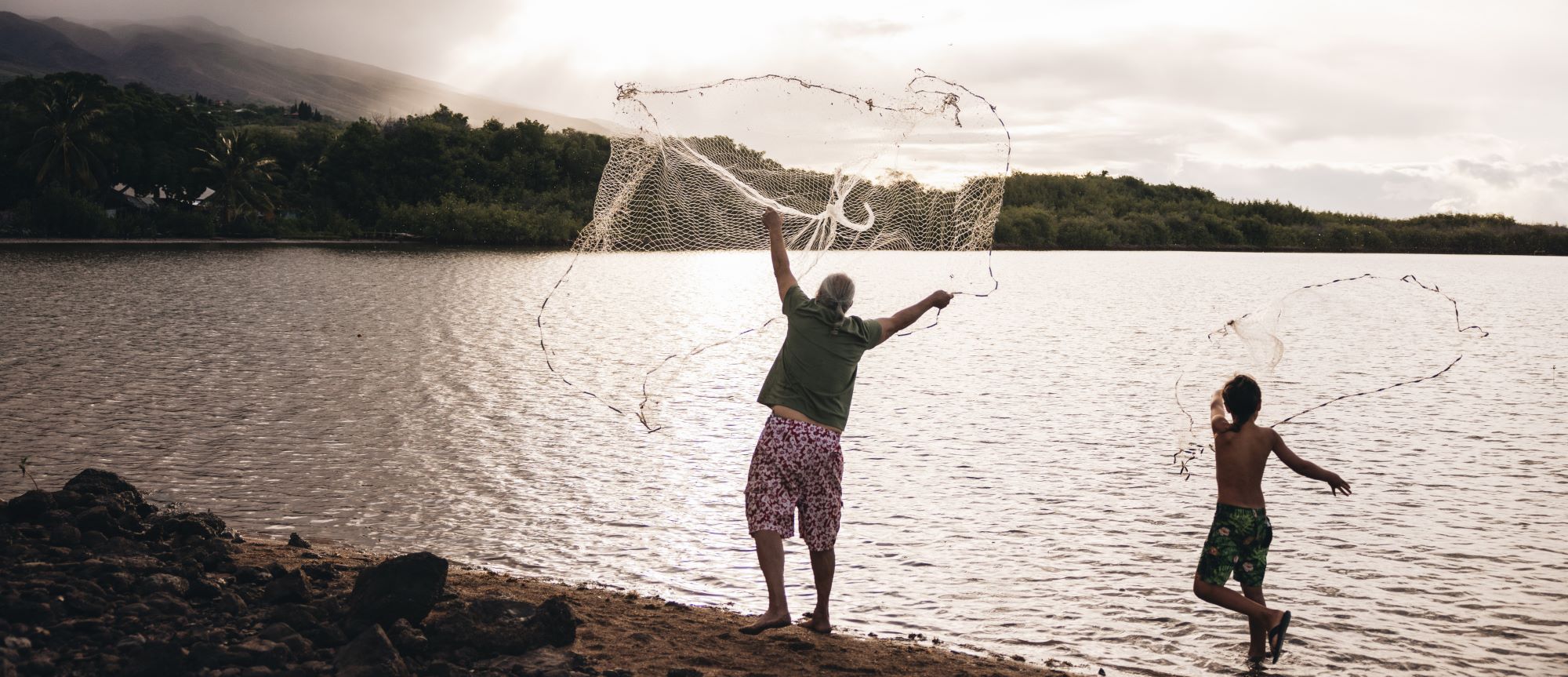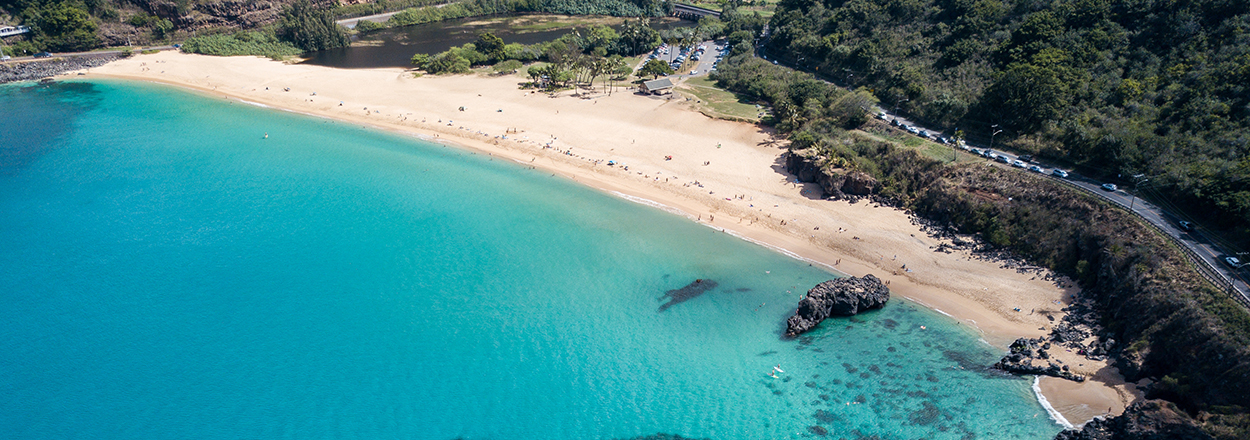In 2019 — the year before COVID-19 shut down visitor travel to Hawai‘i — there was widespread concern about the large number of travelers to Hawai‘i and how they were impacting the islands and their environments. That year, 10.4 million visitors traveled to the state. It was a record high and the 10th consecutive year that the number had increased.
The travel shutdown, which started in early 2020, gave the Hawai‘i Visitors and Convention Bureau (HVCB) and Hawai‘i Tourism Authority (HTA) an unexpected opportunity to reimagine Hawai’i’s tourism.
It also brought insights, such as how people were impacting popular Hanauma Bay, situated within a volcanic cone on O‘ahu alongside a beautiful, white, crescent beach. At the reopening press conference, Lisa Bishop, president of Friends of Hanauma Bay, said that, environmentally speaking, the bay being closed to the public from March through December 2020 was the best thing to happen to it in 100 years. Without the usual number of visitors on site, water clarity and visibility improved dramatically. Scientists found that the bay’s coral regenerated, a higher number of fish were seen and endangered monk seals began resting on the beach, previously crowded with visitors.
When officials reopened Hanauma Bay, it was with changes designed to better protect the nature preserve. The number of visitors per day — previously around 3,000 — was capped at 720, with a maximum of 120 people allowed every hour until the maximum is reached. Tour buses, shuttles and other commercial activities were no longer allowed. The bay was closed to the public two days per week to allow the reef and ecosystem time to rest free of humans. The entry fee for non-residents, which goes toward maintenance, education and research, doubled to $25.
The Mālama Hawai‘i Project
It’s an example of what Kainoa Daines, senior director of brand at the HVCB, calls mālama (a Hawaiian word meaning to care for, protect and preserve) and “establishing guardrails.” He’s referring to the HVCB’s post-pandemic Mālama Hawai‘i project, which he describes as a different way for visitors to consider a visit to Hawai‘i.
The Mālama Hawai‘i program, which launched in mid-2021 with the tagline “Take a trip that gives back,” is a statewide voluntourism program created by the HVCB in partnership with HTA and some Hawai‘i hotels.
Visitors who book their hotel stay through the Mālama Hawai‘i program and volunteer time with specific nonprofit organizations in Hawai‘i can receive travel discounts or free hotel nights. It’s a move to reposition the state as a cultural destination, give visitors access to more than merely sun and surf and protect the islands from some of the dangers of overtourism, both through education and by encouraging people to give back. Daines reported that there are currently 36 volunteer programs and 54 hotel partners, and the project also applies to meeting planning.
Daines says the project is a way to shift perceptions so people think about Hawai‘i not as a playground for visitors but as a home to its residents. “But come!” he said. “When you come to my house, take off your shoes at the door, and you’re welcome to come inside. It’s putting a frame of reference around it. We want you to come, and we want you to enjoy, but we also want you to be able to give back.”
He explained the different way of thinking allows visitors to connect with the culture in ways that weren’t readily available before and participate in projects that help preserve Hawai‘i for the future. It also provides help to nonprofits that need workers. One Mālama Hawai‘i group cleared an entire kalo (a root vegetable) patch in a few hours, a job that would otherwise have taken the single available worker several days.
Cultural education is part of the experience, too. Not only do visitors meet the people working on cultural projects and lend a hand, but they also learn about protocol, such as the Hawaiian practice of asking for permission before entering a place. “That’s not a common Western thought, to ask permission before you enter a space,” Daines said. “We live in an entitled world where, ‘I’ve saved thousands of dollars to go on my vacation, so I’m going to do whatever I want.’ But no, that’s not how it works. You’re welcome here, but there are parameters.”
Getting Your Hands Dirty in Hawai‘i
Through the Mālama Hawai‘i project, visitors can sign up to work on a sea turtle nesting project or a beach cleanup day with the Hawai‘i Wildlife Fund, build trails or propagate seeds with the Waikoloa Dry Forest Initiative or dedicate and plant native trees with the Hawaiian Legacy Reforestation Initiative. In exchange, they can get a fifth night free and daily breakfast for two at the Big Island’s Fairmont Orchid Hotel or 50 percent off up to two additional nights at the Hotel Moloka‘i.
A few of the many restorative activities include the following:
- Restoring a native Hawaiian fishpond
- Working with the Hawai‘i Foodbank
- Helping clean or paint the Battleship Missouri Monument
- Cleaning a beach park on Kaua‘i
- Working with the Moloka‘i Land Trust on Moloka‘i
- Volunteering at a cat sanctuary on Lāna‘i
At O‘ahu’s Kualoa Ranch, there are self-directed beach cleanup opportunities and an immersive eco-adventure tour that includes various types of community service and cultural learning. And they all yield some kind of discount or a free hotel night.
“There are opportunities that are off the beaten path,” said Sam ‘Ohu Gon III, senior scientist and cultural advisor for the Nature Conservancy of Hawai‘i. “People would otherwise never have known that you can go help us repair a 2,000-year-old fishpond wall, for instance.”
Gon works with the Mālama Hawai‘i program by taking visitors to the Mānoa Cliffs restoration project, where volunteers are returning an area to native forest. He says “mālama” in terms of reforestation is restoring the health of the islands and their native ecosystems. “I love the idea of catering to tourists who recognize they’re coming to a special place and want to give back to it,” he said. “People who do that tend to learn a lot more than those who just show up. And it encourages them to come back again and continue to give back.”
He described the reforestation project’s location as providing a wonderful feeling of being separated from civilization, though it’s only a short walk from the road. “It's an awesome opportunity to show people the effect of the native watershed,” Gon said. “I can take them up to the edge of this beautiful native forest and say, ‘All this is right above downtown Honolulu, and it’s what provides the drinking water for this island.’ I can impart a lot of understanding for the people who turn up.”
Learning About More Than Just Surf and Sun
Visitors who help with the reforestation project get to meet people who have been working on forest restoration for a long time and can learn about conservation challenges. “They’re more than happy to introduce people to every single plant they’re working with,” he said. “For instance, it’s one of the few places where olonā, the key cordage plant in ancient Hawai‘i, still grows in abundance. You see things there you can’t see elsewhere.”
Gon says people walk away knowing what the project is about and why it’s important. “It gives people a chance to recognize that Hawai‘i is a special place and to know why it’s so important,” he said.
Guests registering through the Mālama Hawai‘i project to stay at the Ritz-Carlton Residences find that even their lodging choice can leave Hawai‘i better off. The Ritz-Carlton Residences donates $10 for each night’s stay to the Genki Ala Wai Project, which aims to clean Waikīkī’s polluted Ala Wai Canal within the next seven years so residents and visitors can swim and fish there. It also matches visitors’ $10 donations and provides guests with a nightly $20 resort credit.
The Mālama Hawai‘i project has been well-received. A 2022 American Express study supports the idea, finding that 81% of respondents want to travel to destinations where they can immerse themselves into the local culture, and 81% want the money they spend while traveling to go back into the local community.
Gon says the Mālama Hawai‘i project and similar efforts are about forging relationships between people and places. “It ignites a spark for caring for our communities and our places,” he added. “That used to be a natural thing, but now there are so many distractions in the world, and people don’t have a chance to focus on what’s really important. Unless people are reminded of that and have a chance to give back, how long will these places be able to exist without people devoting themselves to their care?”
Originally appeared in the Spring 2023 issue of The Compass magazine
About the Author





comments